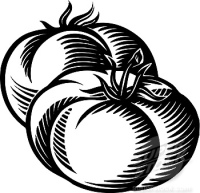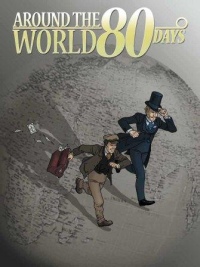Making the Boring Bits Interesting
Michael Berman, UK
Michael Berman’s published work includes The Power of Metaphor for Crown House, The Nature of Shamanism and the Shamanic Story for Cambridge Scholars Publishing, Shamanic Journeys through the Caucasus and Shamanic Journeys, Shamanic Stories for O-Books, Journeys outside Time for Pendraig Publishing, and Tales of Power for Lear Books. A Bridge to the Other Side: Death in the Folk Tradition and Georgia through Earth, Fire, Air and Water are both due to be published by Moon Books in 2012. ELT publications include A Multiple Intelligences Road to an ELT Classroom, In a Faraway Land (a resource book for teachers on storytelling), On Business and for Pleasure (a self-study workbook), and English Language Teaching Matters, written with Mojca Belak and Wayne Rimmer.
For more information please visit www.Thestoryteller.org.uk,
E-mail: michaelberman@blueyonder.co.uk
Menu
Rationale
Not a lot of people know this
The memory game
Pick a number!
A round-the-world tour
What's the word Mr Wolf?
If we are honest with ourselves, whenever we have to take time off teaching and someone is required to stand in for us, we tend to leave them the dirty work to do – teaching what are traditionally regarded as “the boring bits”. Use of the Articles can be included in this category, as unimaginative gap fill exercises are often the only resource we can find to use for the purpose. There are, however, fun ways of teaching Use of the Articles, and five activities are outlined below that you might like to try.
In view of the fact that both the definite article and the indefinite article are among the ten most common English words according to The Oxford English Corpus (1 “the” and 6 “a”), that in a number of languages they do not even exist, and that in the languages that do have articles they are used in a different way to the way they are used in English, to neglect dealing with them in class would clearly be a serious omission on our part. And there is no reason why presenting or providing practice in the use of the Articles has to be a chore, as it is hoped these suggestions will prove to you.
Aim: To practise using the indefinite article to introduce a singular countable noun for the first time.

Tomatoes were originally yellow: hence the Italian name pomodoro ('golden apple'). Red tomatoes came later, discovered in Mexico by two Jesuit priests who brought their seeds back to Europe.
Someone once said “A world without tomatoes is like a string quartet without violins.” When it comes to cooking, my favourite ingredient is chilli, and a world without chilli for me, is a world without any colour.
I wonder what your favourite food or ingredient is. Make a sentence about it like the example, and then share it with the rest of the class:
A world without _______________________ is like a _______________________ without _______________________
Aim: To practise using the indefinite and definite articles.
I’ve got a ring.
I bought the ring earlier this year when I was on holiday in India.
Why do we use A in the first sentence and THE in the second sentence? Because we use the indefinite article to introduce something new but the definite article to refer to something already mentioned or known.
Now I’m going to tell you about something I have. I would like you to repeat what I say and to then tell me about something you have. We are going to work around the room in a circle like this, with each person adding information about something they have, but only after repeating everything previously said.
I’ve got a __________.
The __________ comes from __________.
You’ve got a __________.
The __________ comes from __________.
I’ve got a __________
The __________ comes from __________.
Aim: To practise using the zero and definite articles
Travelling broadens the mind.
The travelling I have done has mainly been in Eastern Europe.
Why do we use no article in the first sentence and the definite article in the second sentence? Because we use no article to refer to something in general but the definite example to refer to a particular example.
Now choose a number between 1 and 25, then go to the number you have chosen in the list. Make two sentences using the noun – one to refer to the subject in general and one to refer to a particular example of it.
Coffee __________.
The Coffee ___________.
Coffee is a stimulant.
The coffee I like best comes from Columbia.
1 Exams / 2 Happiness / 3 Tea / 4 Love / 5 Holidays / 6 Time / 7 Water / 8 Paintings 9 Work / 10 Cigarettes / 11 Friends / 12 Health / 13 Money / 14 Death / 15 Breakfast
16 Accommodation / 17 Pollution / 18 Drugs / 19 Education / 20 Junk food / 21 Marriage / 22 Children / 23 Music / 24 Pets / 25 Transport
Aim: To practise fixed expressions with the zero and definite articles.

Working individually, in pairs or small groups, design a business trip or the holiday of a lifetime by completing the “skeleton” version below:
Last year we sailed to ____________________ (a continent) across the ____________________ (a sea or an ocean) on the ____________________ (the name of a ship).
While we were there we crossed the ____________________ (the name of a river) and sent on a tour to the ____________________ (a range of mountains) because we wanted to climb Mount ____________________ (the name of a single mountain).
We then visited ____________________ (the name of a city) where we stayed at the ____________________ (the name of a hotel). We spent the afternoon in the ____________________ (the name of a gallery or a museum) and in the evening we went to the ____________________ (the name of a concert hall or a theatre).
Aim: A game for younger learners that can be used to focus on uncountable or plural nouns.
Note: A variation on the old favourite Hangman that caters for the bodily-kinaesthetic Intelligence type.
Draw a dash on the board for each letter of the chosen word (an uncountable noun such as FURNITURE or a plural noun such as TROUSERS). Ask the learners to form a horizontal line across the centre of the room. Tell them each time they shout out a correct letter, they can take a step forward, but each time they shout out a wrong one they have to take a step back. And if they guess the word and get it wrong, the penalty is a double one - two steps back. The winner is the person who shouts out the answer (the whole word), or the person closest to the front of the room when you bring the game to an end.

Please check the Creative Methodology for the Classroom course at Pilgrims website.
Please check the Methodology and Language for Secondary Teachers course at Pilgrims website.
Please check the Methodology and Language for Primary Teachers course at Pilgrims website.


|